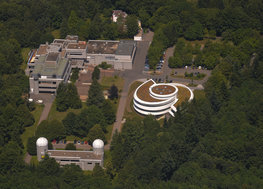Institute und Experten
Das Max-Planck-Institut gibt es nicht – tatsächlich ist die Max-Planck-Gesellschaft Träger einer Vielzahl von Forschungseinrichtungen in Deutschland, aber auch im Ausland. In der Auswahl und Durchführung ihrer Forschungsaufgaben sind die Max-Planck-Institute frei und unabhängig. Sie verfügen daher über einen eigenen, selbst verwalteten Haushalt, der durch Projektmittel von dritter Seite ergänzt werden kann. Die Forschung am Institut muss den wissenschaftlichen Exzellenzkriterien der Max-Planck-Gesellschaft genügen, was durch regelmäßige Evaluation überprüft wird. Die Max-Planck-Institute forschen im Bereich der Lebens-, Natur- und Geisteswissenschaften, vielfach auch interdisziplinär. Ein einzelnes Institut lässt sich daher kaum einem einzigen Forschungsgebiet zuordnen, umgekehrt arbeiten verschiedene Max-Planck-Institute durchaus auch auf demselben Forschungsgebiet.




